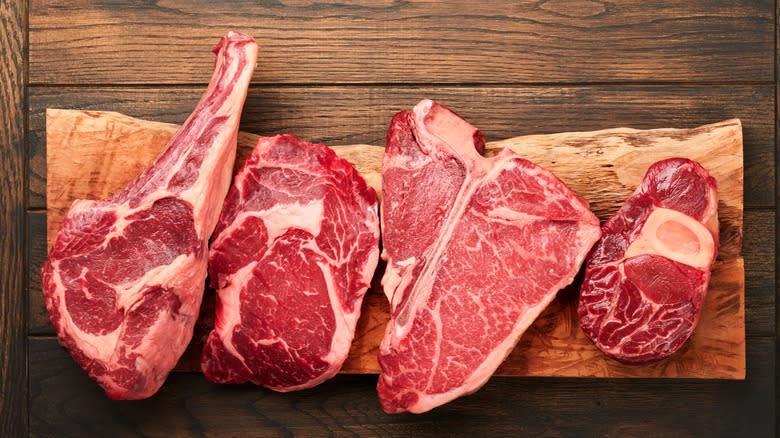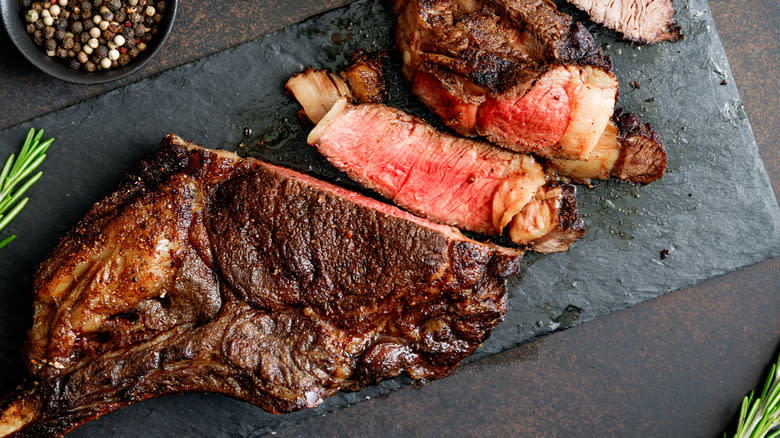The 2 Types Of Beef You're Most Likely To Find In US Restaurants

In the U.S., beef carries many labels. One of the most reliable is the USDA grading system that designates the tenderness, juiciness and flavor of a cut of meat, managed by government inspectors. A side of beef can be given a few different marks, but the most well known are the labels prime, choice, and select, which are all based on the amount of marbling and fat at one spot in a side of beef. At the meat counter you can choose from prime steaks, which are the highest USDA grade (only about 3% of beef makes the grade) and quite a bit more expensive than choice, down to select, which is the cheapest of the three. Restaurants mostly rely on the top two grades of beef, but there can be some exceptions to the rule.
Fine-dining steakhouses often advertise prime cuts on their menus, catering to customers who want the best of the best when it comes to tenderness and flavor. Prime might be reserved for their top-priced steaks, or sprinkled through the menu, based on the chef's preference. Many restaurants and mid-range steak places trend toward buying choice beef, which comes at a more economical price and still has excellent flavor. However, if the grade is not listed, you shouldn't make any assumptions, because there are a lot of marketing terms that can confound the issue. Of course it's highly unlikely you'll see select meat listed on a menu, but that doesn't mean it's not being served.
Read more: The Most Popular Cuts Of Steak Ranked Worst To Best
Beef Marketing Terms Versus Quality Assessment

Some steak chains make a point of mentioning their beef grade not only on the menu but also in their marketing, which can make it easy to know what you're being served. For example, Texas Roadhouse lists only USDA choice steaks, both in the restaurant, where you can even select your own steak if you'd like, and in their online store. Outback Steakhouse is mysteriously silent about the grade of their steaks, which we've learned are cooked in beef tallow and a proprietary seasoning blend. Emeril Lagasse's upscale Delmonico Steakhouse calls out prime grading for some of the steaks, but others get a more nebulous descriptor such as "naturally raised Angus" or "Japanese wagyu".
Angus (or Aberdeen Angus) is a Scottish cattle breed, sometimes called black Angus because of their distinctive black hide. Wagyu is a collective term for four breeds of Japanese cattle. Unlike other beef heading to a restaurant, these cuts are certified to voluntary industry standards instead of earning those USDA grades -- this is to guarantee the breed is what the producer claims. These specialty cattle breeds are famous for great flavor and marbling, so the producers will argue that they exceed the USDA guidelines used for grading (remember, guidelines are based on marbling and fattiness). But it's always good to be informed so you know where your money is going when you order a restaurant steak, the same as when you pick up a steak at the butcher counter.
Read the original article on Tasting Table


